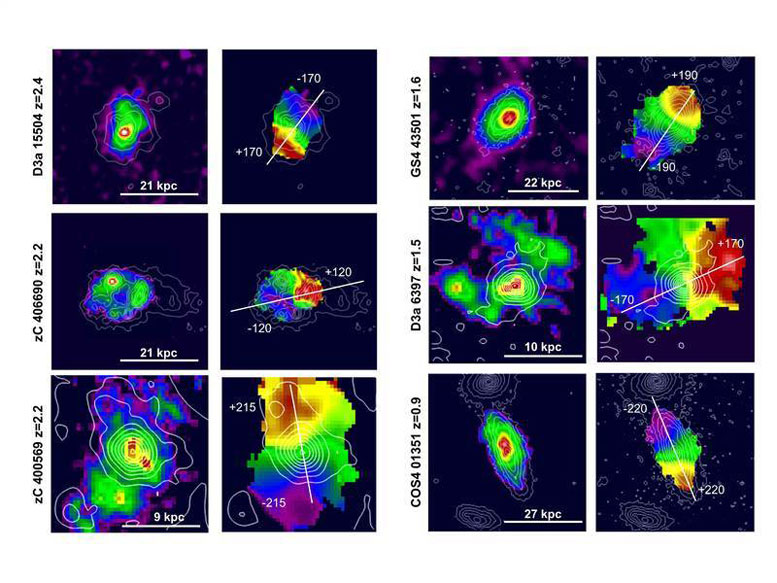
Galaxies in focus: for each galaxy, the left column shows the distribution of the total surface brightness in the Hα line. The right column gives the velocity map. All galaxies show a clear rotation pattern, with blue areas moving towards the observer and red parts away from the observer.
A new set of observations of very young galaxies show that they are completely dominated by ‘normal’ matter, suggesting that dark matter plays a much smaller role in early star systems than in today’s galaxies.
The new the findings by a team of researchers led by Reinhard Genzel of the Max Planck Institute for Extraterrestrial Physics in Garching, who observed falling rotation curves in six galaxies: the velocities of the stars decreased in the outer regions, indicates that there is no additional invisible mass. In addition, the star disks are thicker and more turbulent than those in today’s galaxies.
Over the past few decades, many different studies of galaxies in the local universe have shown the existence and importance of so-called “dark matter”. While normal, or “baryonic”, matter can be seen as brightly shining stars or luminous gas and dust, dark matter interacts with normal matter only through gravity. In particular it is responsible for flat rotation curves in spiral galaxies, i.e. rotation velocities that are constant or increasing with radius.
An international team of astronomers, led by Reinhard Genzel at the Max Planck Institute for Extraterrestrial Physics, have now obtained deep imaging spectroscopy of several hundred massive, star-forming galaxies in the distant universe (at redshift 0.6 to 2.6). This allowed the researchers to extract the rotation curves, which give valuable constraints on the mass distribution out to the edge of the visible disk for both baryonic and dark matter at the peak of cosmic galaxy formation 10 billion years ago. For six galaxies with the highest quality data, the scientists were able to obtain individual rotation curves, while they used a novel stacking approach for about 100 galaxies to constrain an average, representative rotation curve.
“Surprisingly, the rotation velocities are not constant, but drop with radius,” states Reinhard Genzel, first author of a Nature publication about the result. “The reason for this is twofold: First, most of these early massive galaxies are strongly dominated by normal matter with dark matter playing a much smaller role than in the local universe. Second, these early disks were much more turbulent than the spiral galaxies we see in our cosmic neighborhood, so they did not need as much circular motion to be dynamically supported.”
Both effects seem to increase with redshift, which means that they are more important at earlier cosmic times. This suggests that in the early Universe, about 3 to 4 billion years after the Big Bang, the gas in galaxies had already very efficiently condensed at the center of large dark matter halos. It took many billion years longer for the dark matter in the halo to condense as well, so it is not until later times that we see its dominant effect on the rotation velocities of modern disk galaxies. This explanation also agrees with the fact that high-redshift galaxies were much more gas rich and compact compared to low-redshift galaxies. Such a high gas fraction helps to dissipate angular momentum and to drive the gas inwards.
“We have to be very careful when comparing these early massive and gas-rich rotating galaxies to the ones in our local universe,” cautions Natascha Förster Schreiber, co-author for all four studies. “Present-day spirals, such as our Milky Way, require additional dark matter in various amounts. On the other hand, local passive galaxies – which are dominated by a spheroidal component and are the likely descendants of the galaxies in our study – show similarly low dark matter fractions on galactic scales.”
Two additional studies of 240 star forming disks support these findings. Detailed dynamical modelling shows that, while baryons account for typically 56% of the total mass fraction in all galaxies, they completely dominate the inner matter distribution for galaxies at the highest redshifts. The other analysis used the same data in the framework of the Tully-Fisher relation describing a tight relationship between the rotation velocity of a galaxy and its mass or luminosity. Again, the observations show that massive star-forming galaxies at high redshift have a higher baryon fraction out to the outer disk than at lower redshift.
“You can do the arithmetic,” explains Stijn Wuyts from the University of Bath, a co-author on all four papers, “the dynamics reveal the total mass present. Subtract from that what we see in the form of stars and gas, and there really is not much room left for dark matter within these early disk galaxies. The dropping rotation curves are not only in line with these results, they provide a more direct indication of the baryon dominated nature, especially to researchers that have a healthy skepticism about the accuracy with which one can measure the amount of stars and gas in these distant objects.”
References:
- “Strongly baryon-dominated disk galaxies at the peak of galaxy formation ten billion years ago” by R. Genzel, N. M. Förster Schreiber, H. Übler, P. Lang, T. Naab, R. Bender, L. J. Tacconi, E. Wisnioski, S. Wuyts, T. Alexander, A. Beifiori, S. Belli, G. Brammer, A. Burkert, C. M. Carollo, J. Chan, R. Davies, M. Fossati, A. Galametz, S. Genel, O. Gerhard, D. Lutz, J. T. Mendel, I. Momcheva, E. J. Nelson, A. Renzini, R. Saglia, A. Sternberg, S. Tacchella, K. Tadaki and D. Wilman, 16 March 2017, Nature.
DOI: 10.1038/nature21685 - P. Lang, et al., “Falling Outer Rotation Curves of Star-forming Galaxies at 0.6 ≲ z ≲ 2.6 Probed with KMOS3D and SINS/zC-SINF” by Philipp Lang, Natascha M. Förster Schreiber, Reinhard Genzel, Stijn Wuyts, Emily Wisnioski, Alessandra Beifiori, Sirio Belli, Ralf Bender, Gabe Brammer, Andreas Burkert, Jeffrey Chan, Ric Davies, Matteo Fossati, Audrey Galametz, Sandesh K. Kulkarni, Dieter Lutz, J. Trevor Mendel, Ivelina G. Momcheva, Thorsten Naab, Erica J. Nelson, Roberto P. Saglia, Stella Seitz, Sandro Tacchella, Linda J. Tacconi, Ken-ichi Tadaki, Hannah Übler, Pieter G. van Dokkum and David J. Wilman, 22 February 2017, The Astrophysical Journal.
DOI: 10.3847/1538-4357/aa6d82
PDF - “KMOS3D: DYNAMICAL CONSTRAINTS ON THE MASS BUDGET IN EARLY STAR-FORMING DISKS*” by Stijn Wuyts, Natascha M. Förster Schreiber, Emily Wisnioski, Reinhard Genzel, Andreas Burkert, Kaushala Bandara, Alessandra Beifiori, Sirio Belli, Ralf Bender, Gabriel B. Brammer, Jeffrey Chan, Ric Davies, Matteo Fossati, Audrey Galametz, Sandesh K. Kulkarni, Philipp Lang, Dieter Lutz, J. Trevor Mendel, Ivelina G. Momcheva, Thorsten Naab, Erica J. Nelson, Roberto P. Saglia, Stella Seitz, Linda J. Tacconi, Ken-ichi Tadaki, Hannah Übler, Pieter G. van Dokkum, David J. Wilman, and Eva Wuyts, 3 November 2017, The Astrophysical Journal.
DOI: 10.3847/0004-637X/831/2/149 - “The Evolution of the Tully–Fisher Relation between z ∼ 2.3 and z ∼ 0.9 with KMOS3D∗” by H. Übler, N. M. Förster Schreiber, R. Genzel, E. Wisnioski, S. Wuyts, P. Lang, T. Naab, A. Burkert, P. G. van Dokkum, L. J. Tacconi, D. J. Wilman, M. Fossati, J. T. Mendel, A. Beifiori, S. Belli, R. Bender, G. B. Brammer, J. Chan, R. Davies, M. Fabricius, A. Galametz, D. Lutz, I. G. Momcheva, E. J. Nelson, R. P. Saglia, S. Seitz, and K. Tadaki, 22 June 2017, The Astrophysical Journal.
DOI: 0.3847/1538-4357/aa7558
PDF


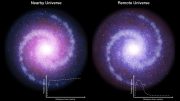
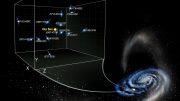
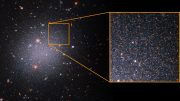
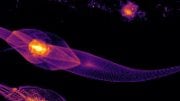

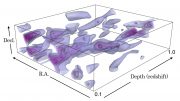
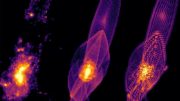
There are some very complicated issues of galaxy formation. Unfortunately, here is the same problem as with the stars. The origin of galaxies remains unclear, in spite of huge activity in the field. What the “formation” means? It means that we have the material that is assembling into galaxies.